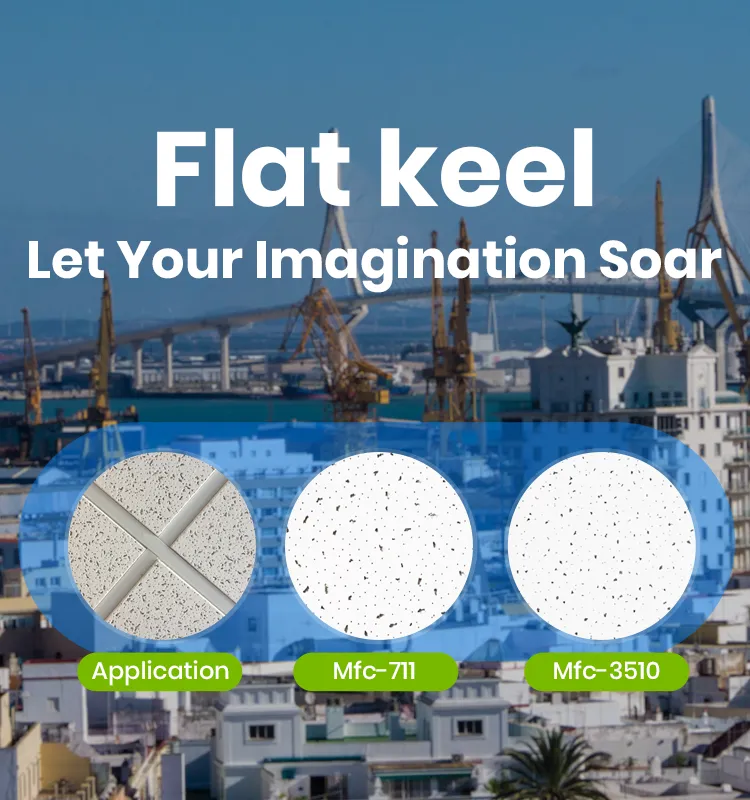10 月 . 02, 2024 18:35 Back to list
Access Panels for Ceiling Installation and Maintenance Solutions
Understanding Ceiling Access Panels Importance and Features
Ceiling access panels are essential components in both residential and commercial construction, serving as strategic entry points to hidden spaces above ceilings. These spaces can include electrical wiring, plumbing, HVAC systems, and insulation, which may require regular maintenance, inspection, or emergency access. By providing a controlled entryway, ceiling access panels facilitate these necessary maintenance tasks without compromising the ceiling's aesthetic and functional integrity.
Importance of Ceiling Access Panels
One of the primary reasons ceiling access panels are vital is safety. Building systems often require periodic checks to ensure they are functioning correctly. For instance, HVAC units may need filter replacements, duct inspections, or repairs. Additionally, electric systems must be assessed for safety compliance, particularly in older structures. Access panels provide a safe way for technicians to perform these inspections, ensuring that complex wiring or plumbing work can be done without the need for extensive ceiling demolition.
Moreover, ceiling access panels contribute to building efficiency. By enabling easy access to integral systems, they help reduce the downtime related to maintenance tasks. This efficiency translates into cost savings for property owners, minimizing the time and labor involved in accessing maintenance areas. In commercial buildings where downtime can significantly impact operations, the value of a well-placed access panel cannot be overstated.
Features of Ceiling Access Panels
Ceiling access panels come in various styles and materials, suited to different applications. Typically, common materials used include steel, aluminum, plastic, and gypsum. Steel panels are often chosen for their durability and security, particularly in environments where robust access is required. Aluminum panels, on the other hand, can be ideal for lightweight applications, while plastic options may be suitable for moisture-prone areas due to their resistance to corrosion.
ceiling access panels

Another critical feature of ceiling access panels is their design. They can come in various sizes to fit different opening requirements and typically have flanged edges to ensure a flush installation against the surrounding ceiling. Many models are also equipped with a locking mechanism to prevent unauthorized access, which is particularly crucial in commercial spaces or areas that house sensitive systems.
Access panels can further be customized to match the décor of a room. For instance, fire-rated panels can be painted to blend seamlessly with the existing ceiling, ensuring that aesthetics are maintained without sacrificing functionality. Some panels are even designed to be acoustically lined, which can help in reducing noise transmission from utility spaces above.
Installation Considerations
Proper installation of ceiling access panels is imperative for their functionality. It’s essential that they are positioned strategically in areas that allow for easy access to utility systems while also considering the overall aesthetics of the space. When planning the installation, it’s important to consult with contractors or architects to ensure compliance with building codes and regulations.
Maintaining clear access is also crucial. Avoiding placing furniture or equipment directly beneath the panel can prevent obstructions during maintenance activities. Routine checks should be conducted to ensure the access panels are operational and that their locking mechanisms and seals are intact.
Conclusion
In conclusion, ceiling access panels play a pivotal role in the maintenance and operation of building systems. Their strategic importance in ensuring easy access for inspections, repairs, and upgrades cannot be overlooked. As property owners and managers seek to optimize their facilities' efficiency, investing in high-quality ceiling access panels that reflect both functionality and design is essential. By understanding their significance and integrating them thoughtfully into building plans, one can enhance both the safety and aesthetic of a space while ensuring operational systems remain in peak condition.
-
Revolutionizing Interior Design with Ceilings t grid Suspended SystemNewsOct.29,2024
-
Revolutionizing Ceiling Design with ceiling access panel with Gypsum Tile WaterproofNewsOct.29,2024
-
Revolutionizing Interior Design with PVC Gypsum Ceiling: A Comprehensive GuideNewsOct.29,2024
-
Elevating Interior Design with High quality Mineral Fiber Ceiling TilesNewsOct.29,2024
-
Revolutionizing Interior Design with PVC Gypsum Ceiling: A Comprehensive GuideNewsOct.29,2024
-
Elevating Interior Design with High-Quality Mineral Fiber Ceiling Tiles: A Comprehensive GuideNewsOct.29,2024







